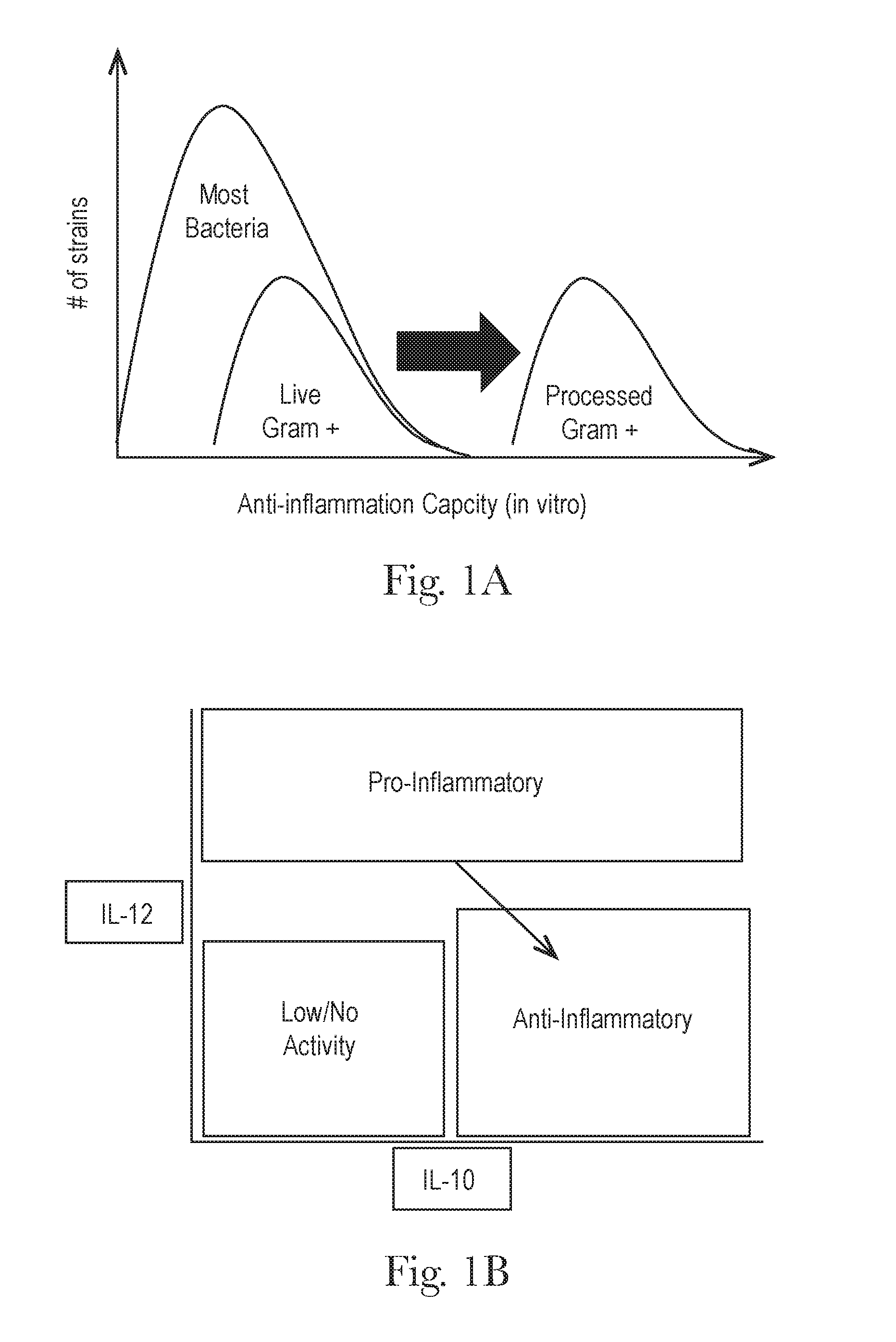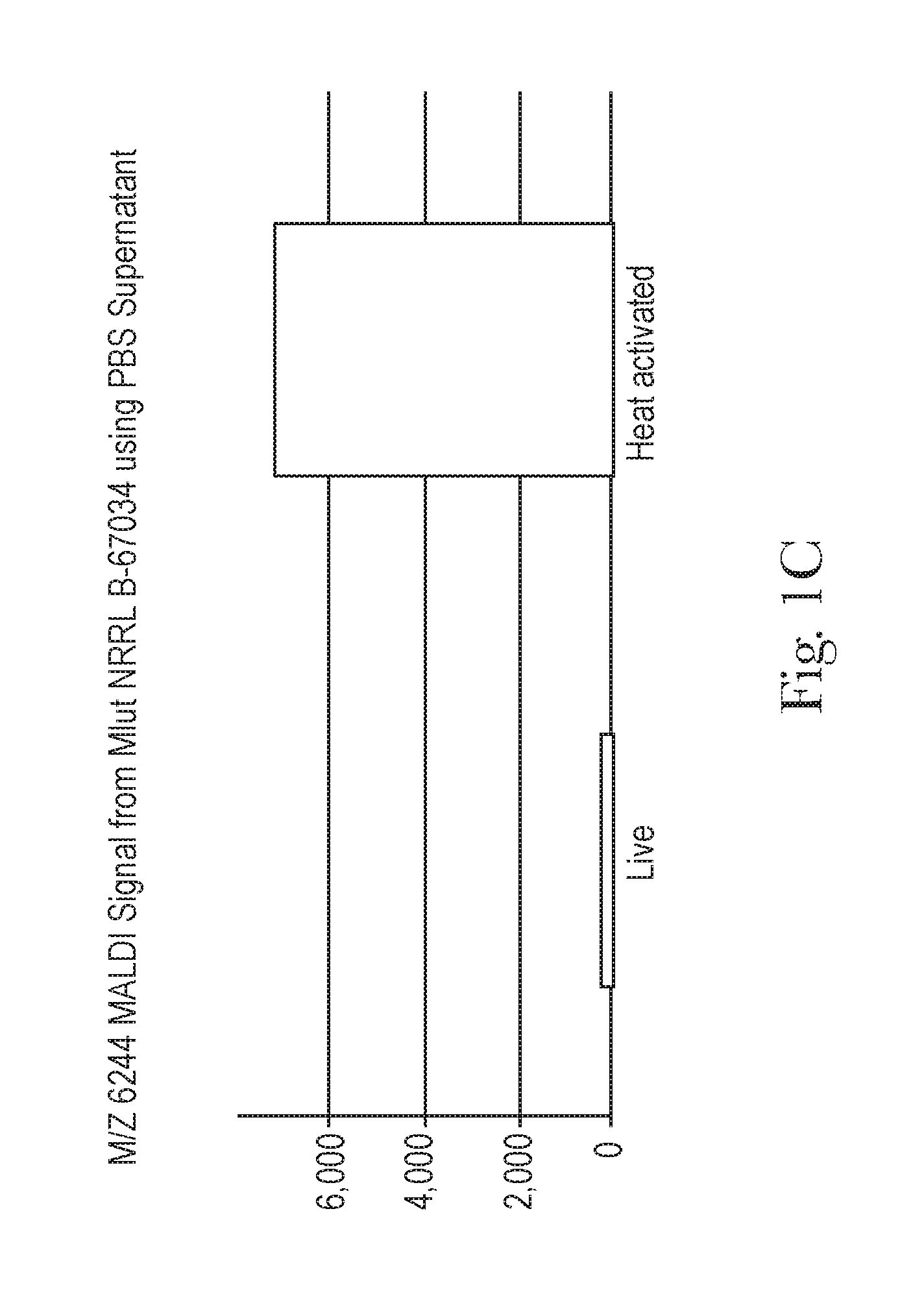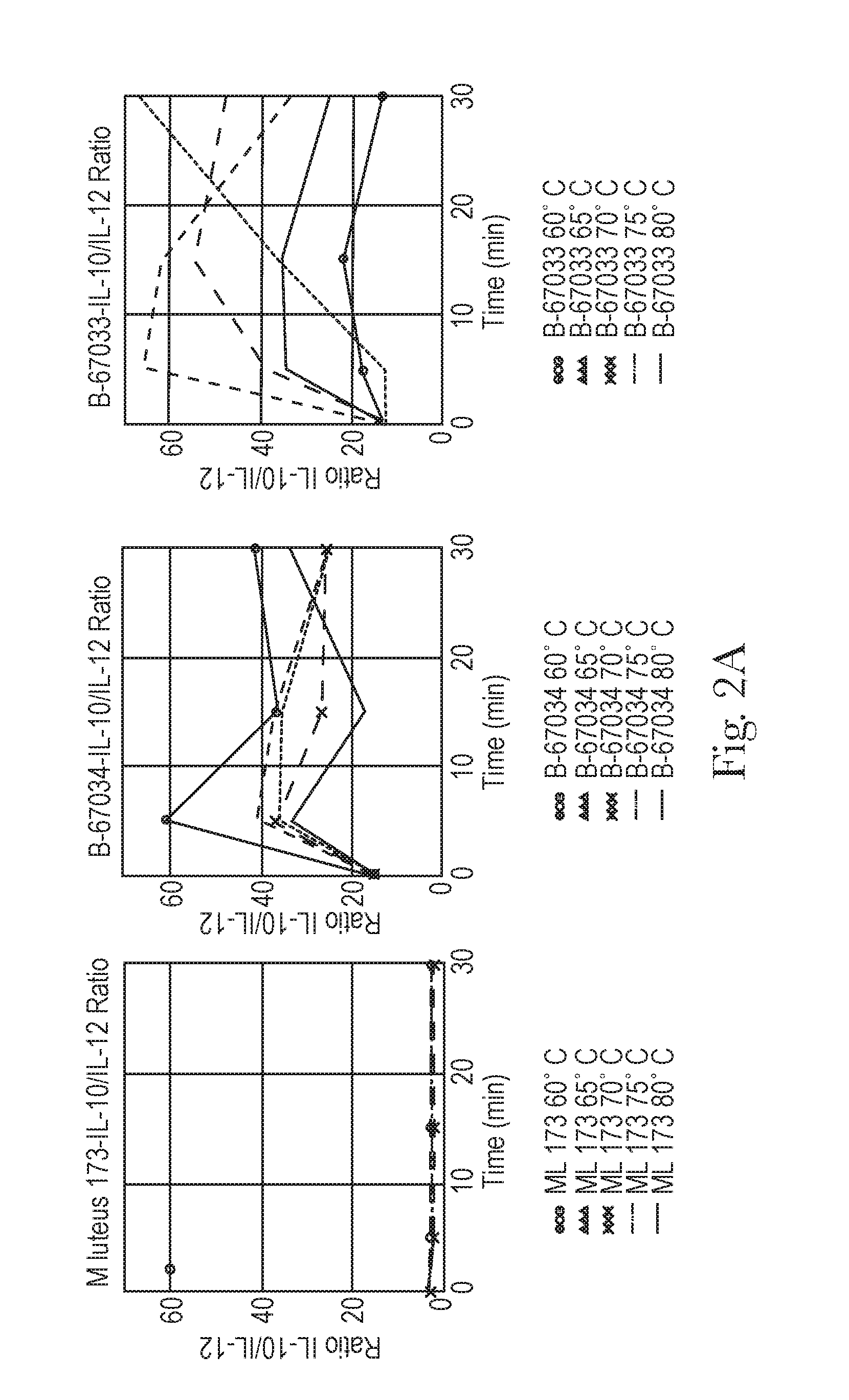Compositions And Methods For Improving Skin Health
a technology of compositions and skin health, applied in the field of compositions and methods for improving skin health, can solve the problems of reducing skin barrier function, affecting the viability of organisms, and affecting the appearance of skin, so as to reduce the ratio of il-1ra, reduce skin inflammation, and reduce the effect of il-1ra
- Summary
- Abstract
- Description
- Claims
- Application Information
AI Technical Summary
Benefits of technology
Problems solved by technology
Method used
Image
Examples
example 1
[0073]Micrococcaceae cells were obtained from skin swab cultures or purchased (ATCC) and grown in tryptic soy broth (TSB, formula available in the art or available commercially; Hardy Diagnostics) (ranges: 33-37° C., 18-24 h, 150-200 rpm; orbital shaker) and collected at a speed sufficient to pellet by centrifugation (e.g. Sorvall Evolution Centrifuge; 12,000×g RCF, 10 min) Cell pellets were washed in phosphate buffered saline (PBS; standard formula common in the art; e.g. Dulbecco's Ca and Mg free) and resuspended in a normalized volume using the OD 600. This is a 100% stock of Micrococcaceae cells. Heat was used to kill the cells while minimizing lysis, generating whole, non-lysed cells. Small diameter thin-wall NMR tubes (5 mm economy NMR tube 7″, Wilmad LabGlass) were filled with a suspension of the Micrococcaceae cells and flame-sealed while the tubes were kept in an ice-bath. The sealed tubes were completely immersed in a circulating water bath (Lauda Brinkmann) Two thermocoup...
example 2
[0076]Micrococcaceae cells were processed using cytotoxic compounds to kill the cells while minimizing lysis. Briefly, a suspension of live Micrococcaceae cells was washed in PBS (as described in Example 1). The cell suspension (100% as described in Example 1) was pipetted into a microcentrifuge tube, which was centrifuged (12,000×g rcf for 1 minute) to pellet the cells. The supernatant was removed and discarded. The cytotoxic compound in media was pipetted into the tube containing the cell pellet. The tube was vortexed until the cells were fully resuspended and then incubated at room temperature for 5 minutes.
[0077]Following treatment, the tube was centrifuged to pellet the cells (12,000×g rcf for 1 minute), and the supernatant was discarded. To wash the cells, the cells were suspended in saline solution (0.9% w / v or normal saline) by vortexing and then centrifuged again to pellet the cells. The supernatant was discarded. The washing step was repeated twice more.
[0078]The PBMC assa...
example 3
[0079]Live Micrococcaceae cells were processed according to each of the following methods: (a) French Press; (b) autoclaving; (c) bead-beating; (d) chemical treatment and (e) heat treatment. For the French Press treatment, M. luteus NRRL B-67034 cells (30 mL, 100% stock as detailed above in Example 1) were run through the French Press (Thermo Spectronic; conditions: piston 1″ Diameter; High ratio; PSI=1000 equivalent ˜16,000 internal cell pressure). The flow-through was collected into a 50 mL conical tube on ice, and 5 mL of the flow through was transferred to a new tube. The remaining 25 mL was run through the French Press a second time, and the flow-through was collected in a 50 mL conical tube. The flow-through was aliquoted into 1 mL tubes and flash frozen and stored at −80° C. For autoclaving, the OD600 of M. luteus NRRL B-67034 cells in TSB culture (33° C. with shaking @ 200 rpm) was measured. The cells were washed 3× with Phosphate Buffered Saline (PBS, standard formula, no C...
PUM
 Login to View More
Login to View More Abstract
Description
Claims
Application Information
 Login to View More
Login to View More - R&D
- Intellectual Property
- Life Sciences
- Materials
- Tech Scout
- Unparalleled Data Quality
- Higher Quality Content
- 60% Fewer Hallucinations
Browse by: Latest US Patents, China's latest patents, Technical Efficacy Thesaurus, Application Domain, Technology Topic, Popular Technical Reports.
© 2025 PatSnap. All rights reserved.Legal|Privacy policy|Modern Slavery Act Transparency Statement|Sitemap|About US| Contact US: help@patsnap.com



